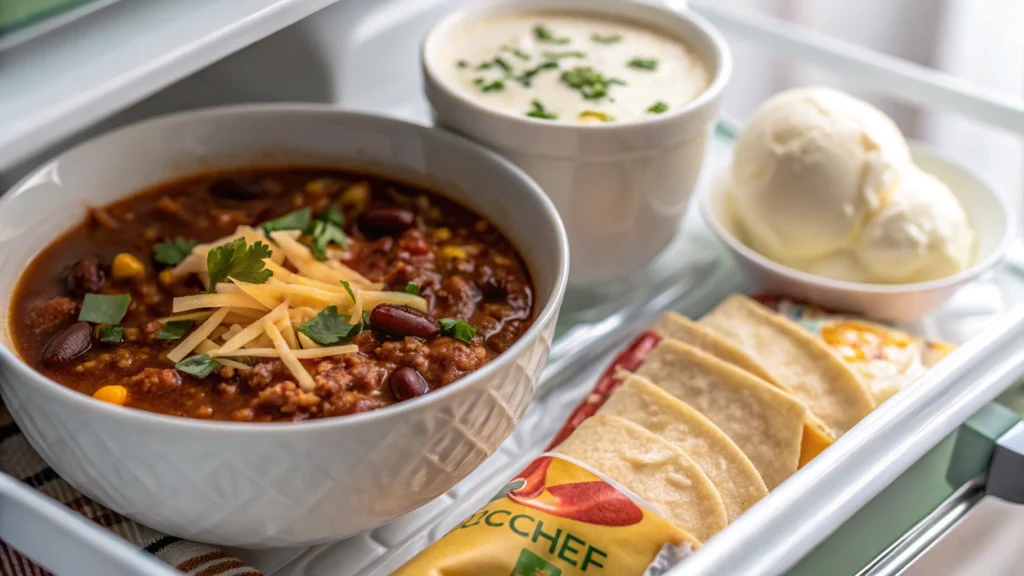Imagine coming home after a long, exhausting day, the chill of the evening air still clinging to your skin. You open the door, and the comforting aroma of taco soup wafts through the kitchen, wrapping you in a warm embrace. This hearty dish, filled with spicy ground meat, beans, and vibrant vegetables, is more than just a meal; it’s a comforting ritual that brings joy and satisfaction. Whether you’re enjoying it on a cozy night or serving it at a gathering with friends, taco soup has a unique way of making any occasion feel special.
But what happens when you make a big batch and want to save some for later? Knowing how to store taco soup properly can ensure that you enjoy its rich flavors and textures long after it’s been cooked. In this article, we’ll explore everything you need to know about freezing taco soup, including how long it lasts, the best storage practices, and tips for reheating it to perfection. By the end, you’ll be equipped with the knowledge to enjoy your favorite taco soup whenever the craving strikes, making every bowl a delightful experience. Let’s dive in!
Understanding Taco Soup
What Is Taco Soup?
Taco soup is a delicious and hearty dish that combines the flavors of traditional tacos in a comforting, stew-like form. Typically made with a base of ground meat—such as beef, turkey, or chicken—this soup also features a medley of ingredients like beans, corn, tomatoes, and a blend of spices. The result is a rich and satisfying meal that captures the essence of tacos while being easy to prepare.
One of the best aspects of taco soup is its versatility. You can easily customize it to suit your dietary preferences, whether you prefer a vegetarian version using lentils and vegetables or a spicy kick with added jalapeños. Served hot and often topped with fresh ingredients like cheese, sour cream, and cilantro, taco soup is not just a meal; it’s a delightful experience that brings warmth and comfort to any table.
Popular Variations
Taco soup is incredibly versatile, allowing you to tailor it to your taste preferences. Here are some popular variations:
- Vegetarian Taco Soup: This version replaces meat with hearty ingredients like black beans, kidney beans, and lentils. You can load it up with fresh vegetables such as bell peppers, zucchini, and corn for added flavor and nutrition. For a delightful recipe, check out this vegetarian taco soup.
- Meat-Based Taco Soup: Traditional taco soup often features ground beef, turkey, or chicken. The meat adds richness and protein, making it a filling meal. You can also experiment with different types of meat or even combine them for a unique twist.
- Spicy Taco Soup: For those who enjoy a bit of heat, adding jalapeños, hot sauce, or spicy seasonings can elevate the flavor. This variation is perfect for spice lovers looking to kick their taco soup up a notch!
Freezing Taco Soup: A Step-by-Step Guide
Preparing Taco Soup for Freezing
To ensure your taco soup retains its delicious flavor and texture when frozen, proper preparation is key.
- Cool Down the Soup: Before freezing, allow your taco soup to cool to room temperature. Rapid cooling helps prevent condensation inside the container, which can lead to freezer burn. You can speed up the cooling process by transferring the soup to a shallow dish or using an ice bath.
- Portioning Tips: Consider dividing the soup into single-serving portions. This approach not only makes it easier to thaw only what you need but also helps maintain freshness. Use airtight containers or freezer bags, and remember to leave some space for expansion as the soup freezes. For more creative soup ideas, check out this mock turtle soup recipe. By following these steps, you’ll be set to enjoy your taco soup at its best!
Best Containers for Freezing
Choosing the right containers is crucial for preserving the quality of your taco soup in the freezer.
- Airtight Containers: Opt for sturdy, airtight containers to keep air out and prevent freezer burn. These containers are ideal for maintaining flavor and texture, ensuring your soup tastes fresh when reheated.
- Freezer Bags: Freezer bags are another excellent option. They save space and can be laid flat for easy stacking in your freezer. When using freezer bags, squeeze out as much air as possible before sealing to minimize the risk of freezer burn.
- Labeling and Dating: Always label your containers with the contents and the date. This practice helps you keep track of how long the soup has been in the freezer. Knowing when to use your frozen meals can prevent waste and ensure you enjoy them at their best. For more delicious meal prep ideas, check out this chicken cauliflower casserole recipe.
How Long Will Taco Soup Last in the Freezer?

General Freezing Guidelines
When it comes to freezing taco soup, you want to ensure you’re enjoying it at its best. Generally, taco soup can last in the freezer for about 3 to 4 months. While it may still be safe to eat beyond this time, the flavor and texture may start to decline.
Signs of Freezer Burn
Recognizing the signs of freezer burn can help you determine if your taco soup is still good to eat.
- Off Smell: One of the first indicators of freezer burn is an unpleasant or off smell. If your taco soup has developed a strange odor upon thawing, it’s best to discard it to avoid any potential health risks.
- Discoloration: If you notice any significant discoloration in your soup, such as a faded or dull appearance, this could be a sign of freezer burn. While minor discoloration may not affect safety, it can impact the flavor and overall enjoyment of the dish.
- Ice Crystals: The presence of ice crystals on the surface of your soup indicates that moisture has escaped, leading to freezer burn. If you find these crystals, it’s a good idea to consume the soup soon or consider using it in a cooked dish. For more culinary inspiration, check out this chicken Bryan recipe.
Factors Affecting Shelf Life
Understanding the factors that impact the shelf life of your taco soup can help you enjoy it at its best.
- Ingredients Used: The type of ingredients in your taco soup plays a significant role in its longevity. For instance, soups with high-fat content, like those containing cream or cheese, may spoil faster than those made with lean meats and vegetables. Additionally, fresh ingredients tend to have a shorter shelf life compared to canned or frozen ones.
- Storage Conditions: Proper storage conditions are crucial for maximizing shelf life. Ensure your soup is cooled and stored in airtight containers or freezer bags to minimize exposure to air and moisture. The temperature of your freezer also matters; maintaining a consistent temperature of 0°F (-18°C) helps preserve the quality of your taco soup. For more delicious meal ideas, check out this chicken and yellow rice recipe.
Thawing and Reheating Taco Soup
Safe Thawing Methods
Thawing your taco soup safely is essential to maintain its quality and prevent foodborne illnesses. Here are three effective methods:
- Refrigerator Method: The safest way to thaw taco soup is in the refrigerator. Simply transfer the frozen soup to the fridge and let it thaw gradually over several hours or overnight. This method ensures that the soup remains at a safe temperature, preventing bacterial growth.
- Cold Water Method: If you need to thaw your soup more quickly, the cold water method is effective. Place the sealed container or freezer bag of soup in a bowl of cold water, changing the water every 30 minutes. This method can thaw soup in about an hour, but make sure to cook it immediately after thawing.
- Microwave Method: For a quick option, you can use the microwave. Set your microwave to the defrost setting, checking frequently to ensure the soup doesn’t start cooking. Once thawed, heat it thoroughly before serving.
Reheating Options
Reheating your taco soup properly is crucial for enjoying its rich flavors and ensuring food safety. Here are two effective methods:
- Stove: Reheating on the stove is a great way to restore the soup’s texture and flavor. Pour the thawed soup into a saucepan and heat over medium heat. Stir occasionally to prevent sticking and ensure even heating. If the soup is too thick, you can add a splash of broth or water to reach your desired consistency. Heat until the soup is steaming hot, reaching an internal temperature of at least 165°F (74°C).
- Microwave: The microwave offers a quick reheating option. Transfer the soup to a microwave-safe bowl, covering it with a microwave-safe lid or plate to prevent splatters. Heat on medium power in 1-minute intervals, stirring in between to promote even heating. Once hot, check that the soup is steaming throughout before serving. This method is convenient but may alter the texture slightly compared to stovetop reheating.
Tips for Maintaining Flavor and Texture
To ensure your taco soup retains its delicious flavor and appealing texture after freezing and reheating, consider these helpful tips:
- Add Fresh Ingredients: Incorporating fresh ingredients just before serving can significantly enhance the flavor and texture of your taco soup. Consider adding fresh herbs like cilantro or parsley, diced avocados, or a squeeze of lime juice. These additions not only brighten the dish but also provide a burst of freshness that contrasts beautifully with the richness of the soup.
- Adjust Seasoning: Freezing can sometimes dull the flavors of your soup. After reheating, taste the soup and adjust the seasoning as needed. You may want to add a pinch of salt, a dash of hot sauce, or some extra spices to bring the flavors back to life. This step ensures that your taco soup remains vibrant and satisfying, making each bowl a delightful experience.
Tips for Making the Most of Your Taco Soup

Adding Fresh Ingredients
Enhancing your taco soup with fresh ingredients can elevate the dish and create a more enjoyable dining experience. Here are two key ways to do this:
- Toppings: Adding toppings is a simple yet effective way to boost flavor and texture. Consider garnishing your taco soup with shredded cheese, sour cream, or Greek yogurt for creaminess. Fresh ingredients like diced tomatoes, sliced jalapeños, or chopped green onions add crunch and brightness. Avocado slices or guacamole can also provide a rich, buttery contrast that complements the spices in the soup.
- Accompaniments: Pairing your taco soup with delicious accompaniments can enhance the meal. Serve it alongside crispy tortilla chips for added crunch, or offer warm corn tortillas to scoop up the soup. A side salad with a tangy vinaigrette can also provide a refreshing balance. These additions not only make the meal more satisfying but also allow for a variety of textures and flavors to enjoy.
Creative Ways to Use Leftovers
Transforming leftover taco soup into new dishes can minimize waste and keep your meals exciting. Here are three creative ideas:
- Casseroles: Incorporate your taco soup into a comforting casserole. Mix the soup with cooked pasta or rice, add some cheese, and top with breadcrumbs for a crunchy finish. Bake until bubbly and golden for a hearty dish that’s perfect for family dinners.
- Tacos: Repurpose leftover taco soup as a filling for tacos. Simply warm the soup, then spoon it into taco shells or tortillas. Top with your favorite toppings like lettuce, cheese, and salsa for a quick and delicious meal that brings new life to your leftovers.
- Rice Bowls: Use the soup as a base for flavorful rice bowls. Serve the taco soup over a bed of rice or quinoa, and add fresh vegetables, avocado, and a drizzle of lime juice. This dish is not only nutritious but also customizable according to your taste preferences.
Frequently Asked Questions (FAQs)
Q: How long will taco soup last in the freezer?
Taco soup typically lasts 3 to 4 months in the freezer for optimal quality.
Q: Can you freeze taco soup with dairy?
Yes, you can freeze taco soup with dairy, but it may affect the texture. Consider adding dairy after thawing.
Q: What are the signs that taco soup has gone bad?
Look for an off smell, discoloration, or ice crystals as indicators that the soup may no longer be good.
Q: Can you freeze taco soup in mason jars?
Yes, you can use mason jars, but remember to leave space for expansion.
Q: Is it safe to refreeze taco soup?
Yes, if the soup was thawed in the refrigerator, it’s safe to refreeze.
Q: How can I enhance the flavor of reheated taco soup?
Adding fresh herbs or a dash of lime juice can brighten up the flavors when reheating.
Conclusion
Knowing how long taco soup will last in the freezer empowers you to enjoy this comforting dish whenever you desire. With proper preparation, storage, and reheating techniques, you can savor every bite of your delicious creation. So, the next time you whip up a batch, don’t hesitate to freeze some for later—your future self will be grateful!
Call to Action
Now that you’re equipped with all the information about taco soup storage, why not make a batch today? Freeze some for those busy days ahead, and share your favorite variations with friends and family. Happy cooking!

